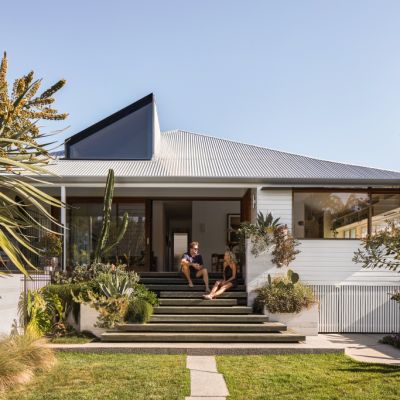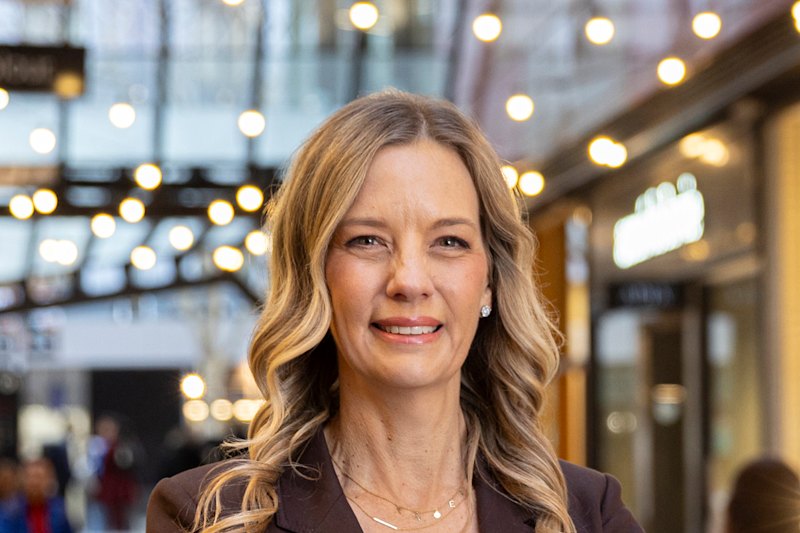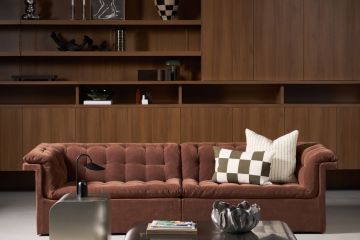Why stainless steel is making a comeback
While brass, chrome, and marble are showcased in some of the world’s most curated interior spaces, designers inspired by the industrial and minimalist style of the 1990s are rediscovering the unique beauty of stainless steel.
“Stainless steel is a timeless material that transcends trends,” says architect Charles Inglis. “It’s durable, sleek and versatile, and home owners are increasingly valuing these qualities, leading to its broader adoption in various architectural elements.”
Despite being dismissed by some as too sterile to be stylish, the century-old metal is making a splash on TikTok and is the new designer-approved surface for interiors, from countertops and splashbacks to glamourous entry doors.
“Stainless steel adds modern architectural integrity to a scheme, and purists have always loved it because it’s honest, highly durable and a fresh, humble alternative to more luxe metals,” says interior designer Brendan Wong.
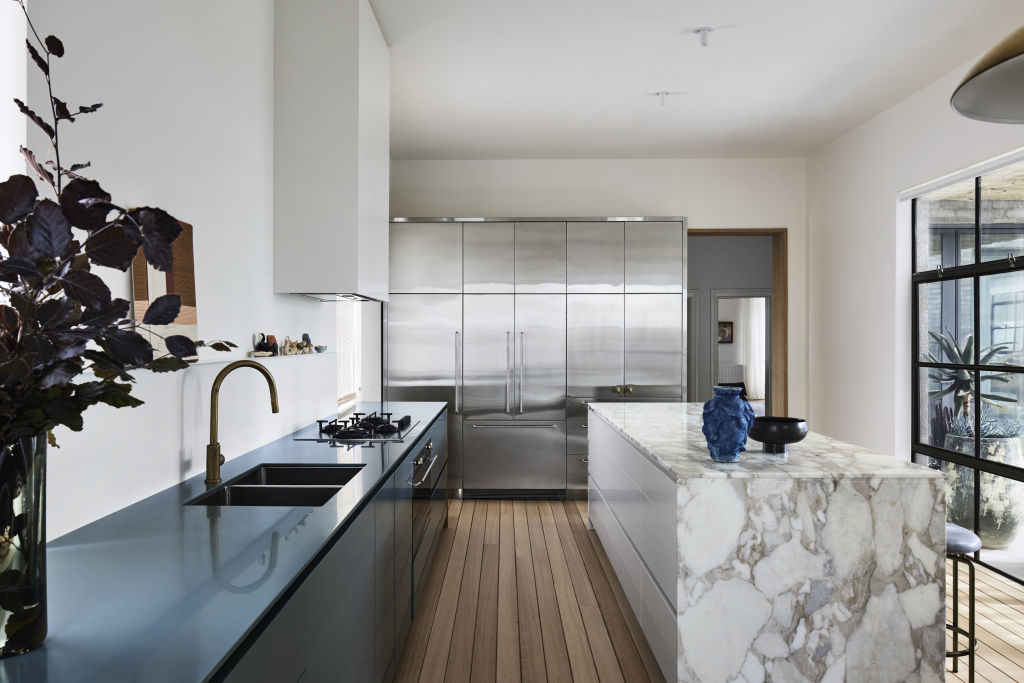
“For years, brass, bronze, and even copper dominated interior palettes, and stainless steel is perhaps making a comeback because new-generation designers are discovering it for the first time.
“It’s cool in colour and attitude and conjures ’90s hard-edged chic.”
Unapologetically utilitarian, the iron alloy’s robust properties have made it the material of choice for hard-wearing kitchens and commercial environments. However, interior architect Edwina Glenn says it is also a material with huge flexibility, making it easily adaptable and luxurious.
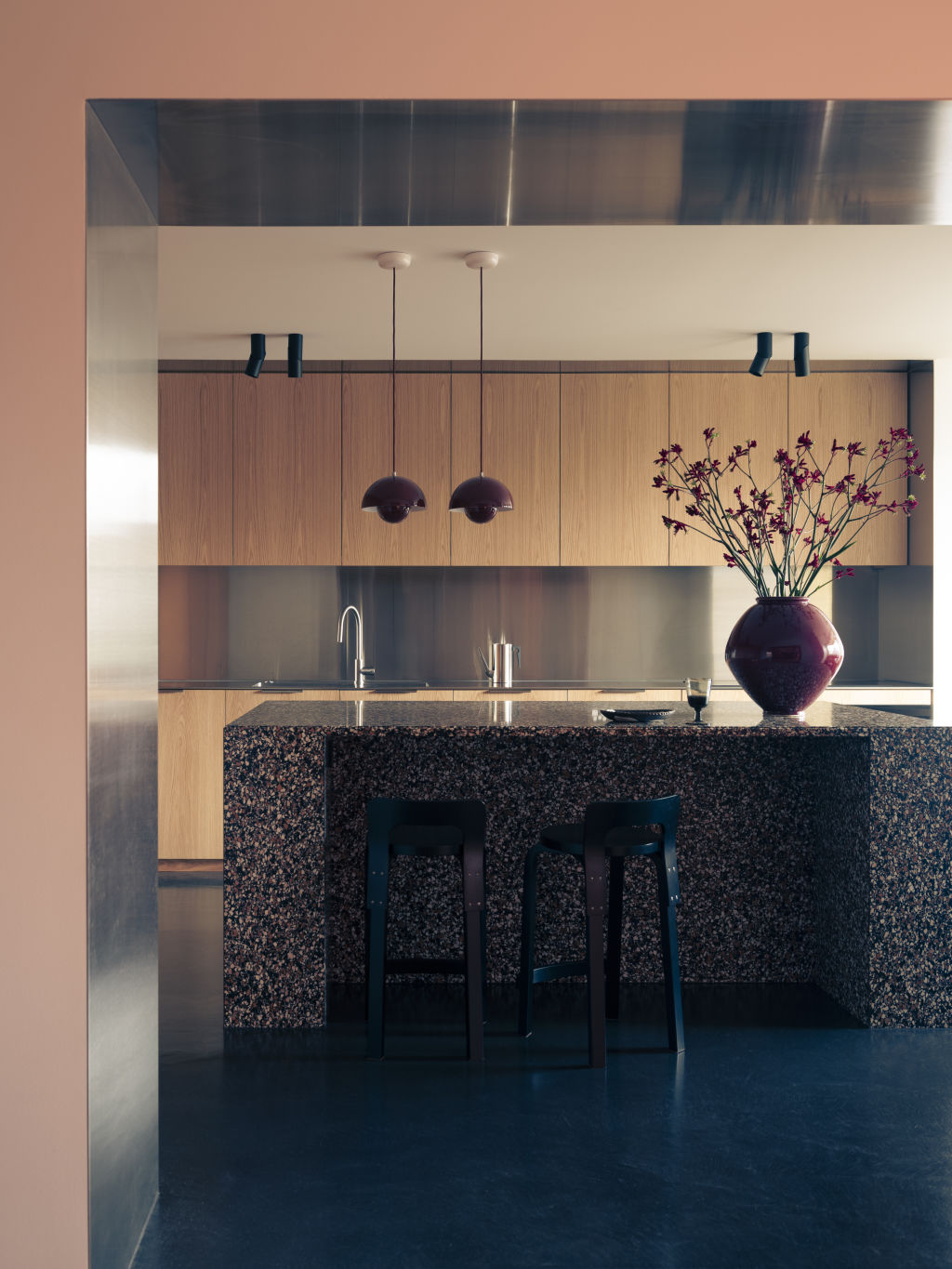
“Stainless steel can be polished, brushed and powder-coated, and as a thin sheet metal can be wrapped around curving substrates, making it an incredibly versatile product,” she says.
“While laminates, brass and timbers have their applications, designers are looking for alternative surfaces, and stainless steel is incredibly durable and hygienic, 100 per cent recyclable and, as a sheet metal, affordable, depending on the application.”
Stainless steel’s glacial beauty lies in its gleaming lustre. Its reflective surface makes it easy to layer with other materials such as concrete, textured stone, brick and leather, as well as primary colours, cool greys and black and white.
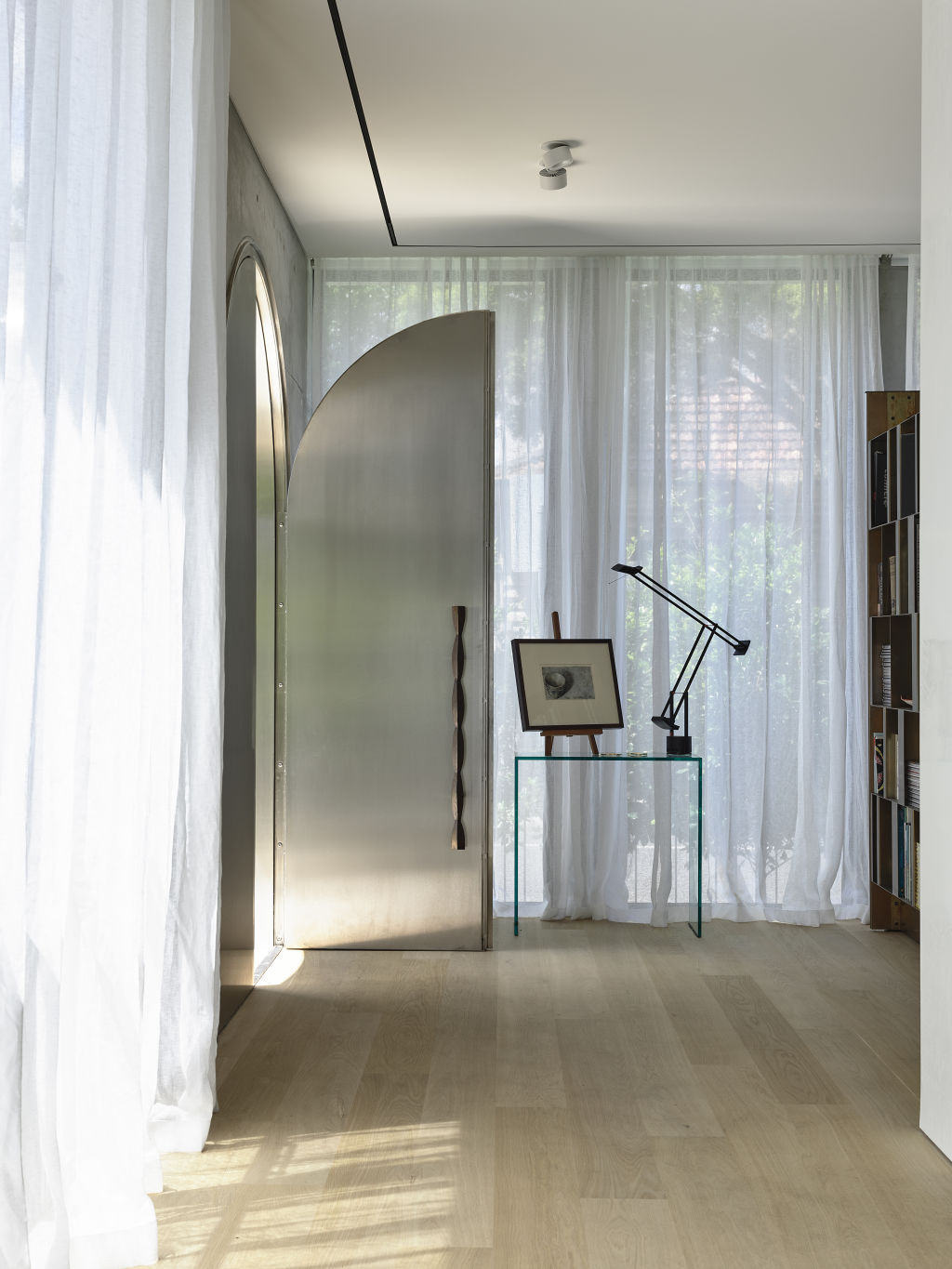
“It also pairs well with other metals such as brass, creating dynamic architectural compositions,” adds Inglis, who created a stunning arched stainless-steel entrance door for his DS Residences project in Melbourne’s South Yarra.
“Its unique reflective personality can sometimes appear dull and lifeless but comes to life with warmth through its interactions with light.
“It can be polished and oxidised in many ways, which allow it to be personalised.”
Studio Prineas principal Eva-Marie Prineas selected stainless steel for her residential project, Doria Apartment in Sydney’s Double Bay, layering it with timber, terracotta-toned cabinetry, and terrazzo.
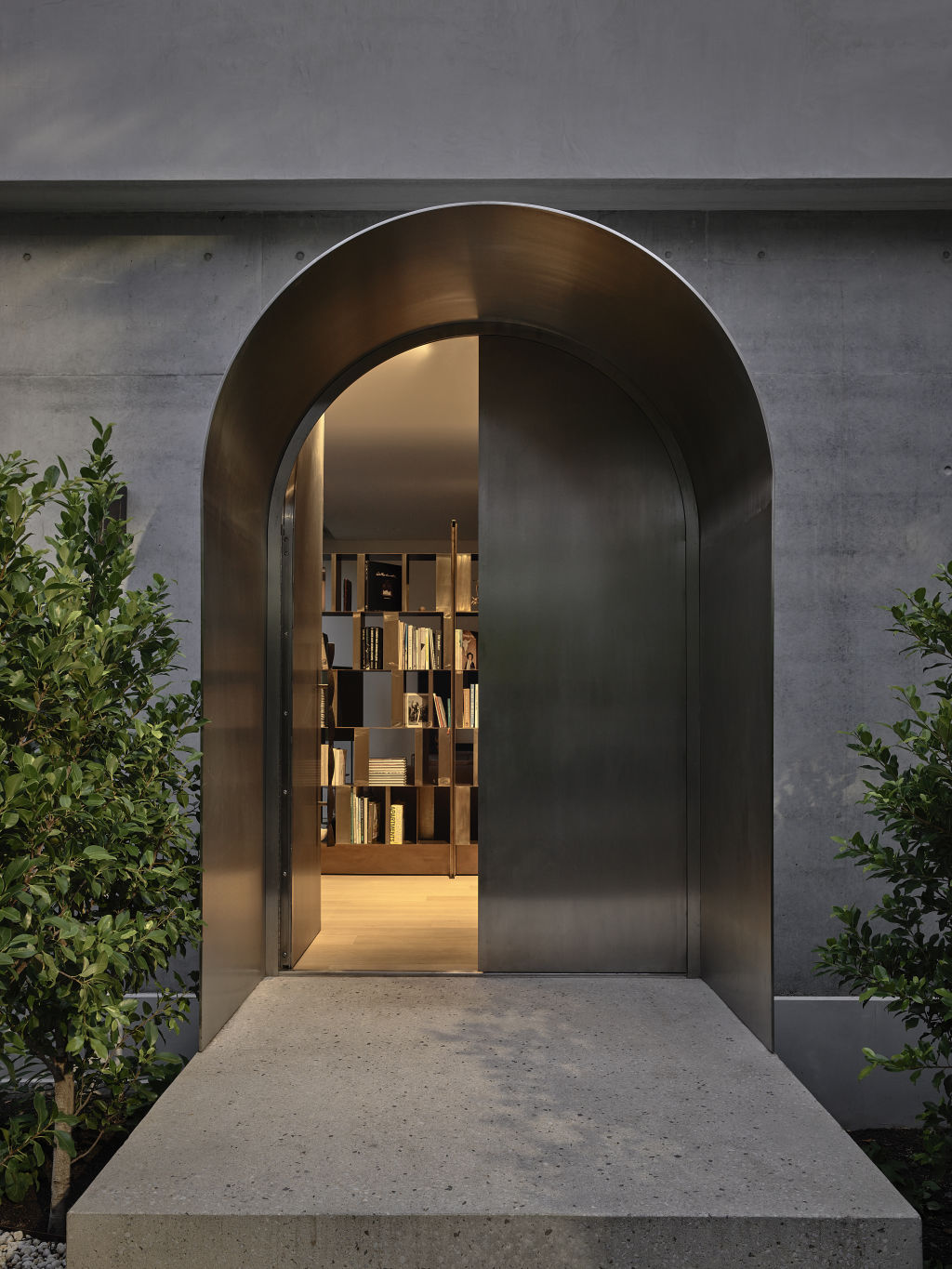
“Our clients love cooking and wanted a hard-working and serviceable kitchen surface that would only improve with use, and stainless steel was the perfect material to achieve this outcome,” she says.
“We also used it to line the portal between the kitchen and living areas, creating a sense of depth while reflecting and bouncing natural light throughout the apartment.”
Despite its strength and cool credentials, stainless steel is not invincible and does show smudges, grime and visible signs of wear and tear.
“It’s a part of its charm,” Wong says. “If scratches are left over a long period, they become a finer overall patina. Otherwise, stainless steel can be revived in situ.”
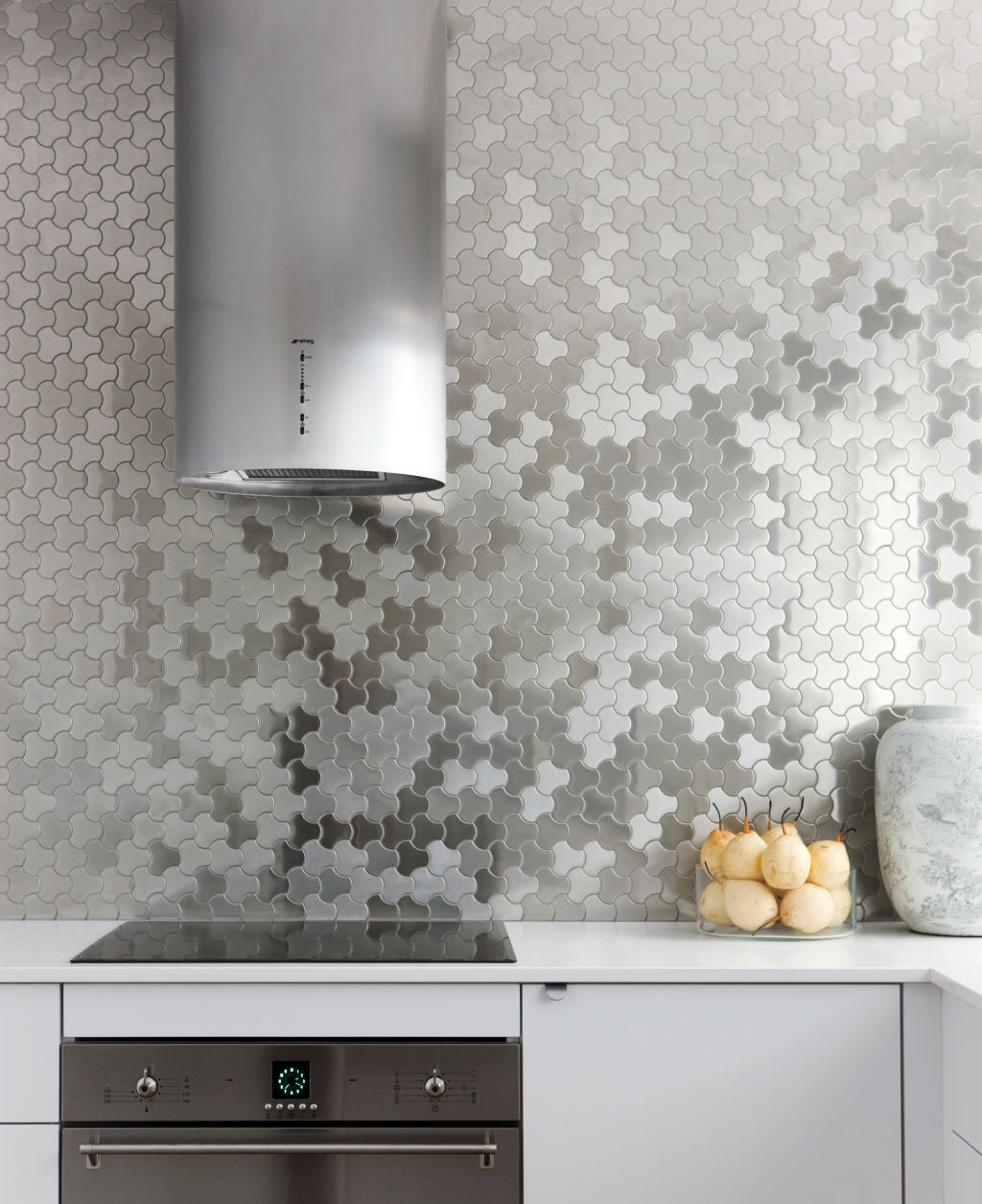
You can maintain stainless steel benchtops, design features and appliances such as microwaves, ovens, fridges and dishwashers with warm water, dish soap and a little elbow grease.
Gently wipe away grime with a microfibre cloth and use a specialised product for more stubborn stains.
“Stainless steel surfaces show fingerprints, so for vertical surfaces, I specify handles rather than touch catches or finger-pulls to minimise the markings,” Glenn says.
Despite its maintenance requirements, stainless steel’s revived popularity will continue to soar, she adds.
“As a truly recyclable material, stainless steel is incredibly appealing moving forward, and given it has been around since 1913 and continues to thrive, I think the possibilities for its future are endless.”
We recommend
We thought you might like
States
Capital Cities
Capital Cities - Rentals
Popular Areas
Allhomes
More


